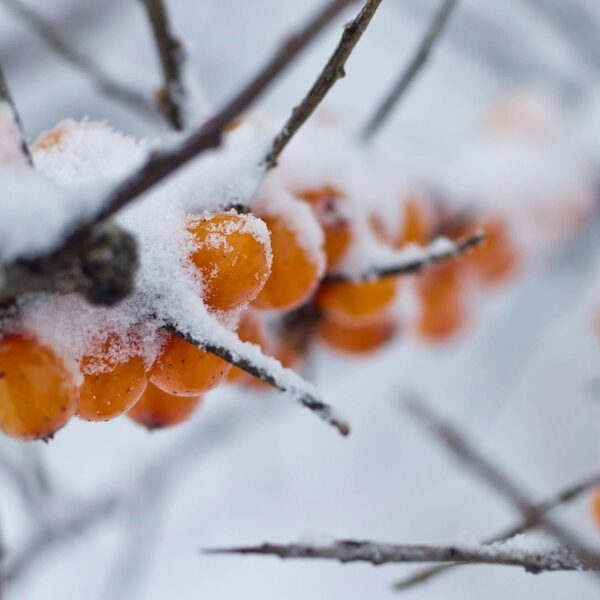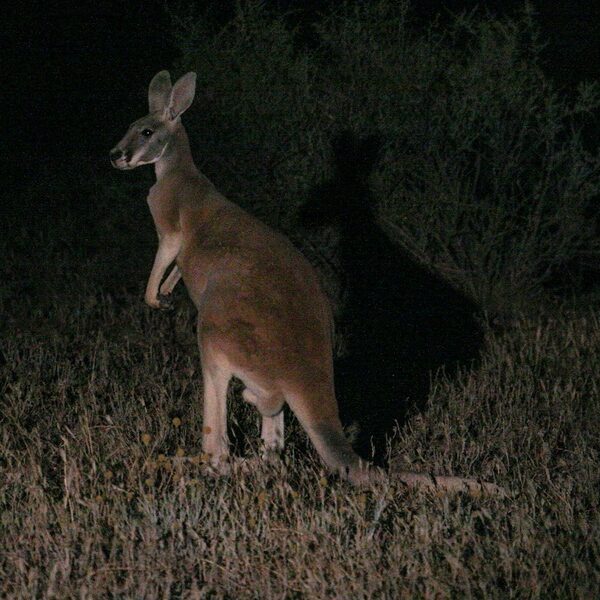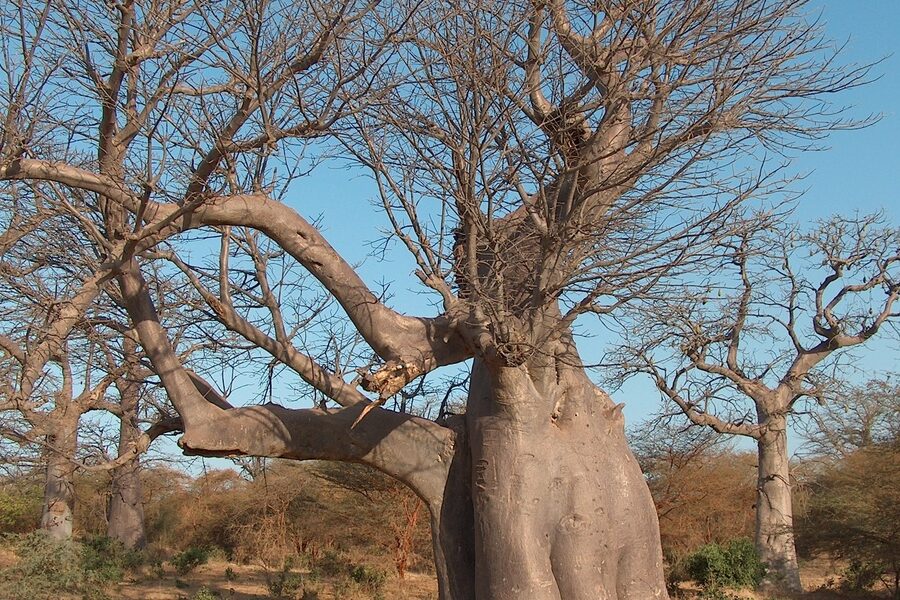Whether you’re refreshing a small balcony plot or planning a mixed border for a suburban yard, cooler blue tones bring a calm, cohesive look to many garden styles. Blue-flowering and blue-foliaged species pair well with whites, silvers, and warm oranges, and they work in sun or shade depending on the plant.
There are 45 blue plants, ranging from Arrowwood Viburnum to Virginia Bluebells. For each entry the list includes Scientific name,Color type,Hardiness (USDA zones) so you can compare true blue blooms, blue-lilac tones, and blue foliage in your climate — you’ll find it all below.
How can I tell which blue plants will actually look blue in my garden?
Color can shift with light, soil, and cultivar, so check photos of the specific cultivar in similar conditions and note bloom time. Cool morning or evening light and acidic soils can deepen blues for some species; others show bluer tones in full sun. Use the Scientific name from the list to research cultivar photos and local nursery advice.
Which blue plants are easiest for beginners?
Look for hardy, low-maintenance options like Nepeta (catmint), perennial salvias, Plumbago in mild climates, and reliable natives such as Virginia Bluebells; shrubs like Arrowwood Viburnum offer blue-tinted flowers or berries and straightforward care. Start with one or two that match your light and zone from the Hardiness column and expand from there.
Blue Plants
| Common name | Scientific name | Color type | Hardiness (USDA zones) |
|---|---|---|---|
| Himalayan Blue Poppy | Meconopsis betonicifolia | Blue flower | 5–7 |
| Gentian Sage | Salvia patens | Blue flower | 8–10 |
| Cornflower | Centaurea cyanus | Blue flower | 2–11 (annual) |
| Blue Daze | Evolvulus glomeratus | Blue flower | 9–11 |
| Delphinium | Delphinium elatum | Blue flower | 3–7 |
| Siberian Bugloss | Brunnera macrophylla | Blue flower | 3–8 |
| Bluestar | Amsonia hubrichtii | Blue flower | 5–8 |
| Leadwort | Ceratostigma plumbaginoides | Blue flower | 5–9 |
| Sea Holly | Eryngium planum | Blue flower (bracts) | 5–9 |
| Morning Glory ‘Heavenly Blue’ | Ipomoea tricolor ‘Heavenly Blue’ | Blue flower | 10–12 (annual elsewhere) |
| Bigleaf Hydrangea | Hydrangea macrophylla | Blue flower | 6–9 |
| Bluebeard | Caryopteris x clandonensis | Blue flower | 5–9 |
| California Lilac | Ceanothus spp. | Blue flower | 8–10 |
| Siberian Squill | Scilla siberica | Blue flower | 2–8 |
| Grape Hyacinth | Muscari armeniacum | Blue flower | 4–8 |
| Lily of the Nile | Agapanthus africanus | Blue flower | 9–11 |
| False Indigo | Baptisia australis | Blue flower | 3–9 |
| Virginia Bluebells | Mertensia virginica | Blue flower | 3–8 |
| Love-in-a-Mist | Nigella damascena | Blue flower | 2–11 (annual) |
| Borage | Borago officinalis | Blue flower | 2–11 (annual) |
| Blue Fescue | Festuca glauca | Blue foliage | 4–8 |
| Hosta ‘Halcyon’ | Hosta ‘Halcyon’ | Blue foliage | 3–8 |
| Colorado Blue Spruce | Picea pungens ‘Glauca’ | Blue foliage | 2–7 |
| Blue Star Juniper | Juniperus squamata ‘Blue Star’ | Blue foliage | 4–8 |
| Blue Chalksticks | Senecio serpens | Blue foliage | 10–11 |
| Cider Gum | Eucalyptus gunnii | Blue foliage | 8–10 |
| Blue Agave | Agave tequilana ‘Weber Azul’ | Blue foliage | 9–10 |
| Porcelain Berry | Ampelopsis brevipedunculata | Blue fruit | 5–8 |
| Highbush Blueberry | Vaccinium corymbosum | Blue fruit | 4–7 |
| Bluebead Lily | Clintonia borealis | Blue fruit | 3–6 |
| Sapphire Berry | Symplocos paniculata | Blue fruit | 4–8 |
| Oregon Grape | Mahonia aquifolium | Blue fruit | 5–9 |
| Edging Lobelia | Lobelia erinus | Blue flower | 10–11 (annual elsewhere) |
| Bog Sage | Salvia uliginosa | Blue flower | 6–10 |
| Cranesbill ‘Rozanne’ | Geranium ‘Rozanne’ | Blue flower | 5–8 |
| Siberian Iris | Iris siberica | Blue flower | 3–8 |
| Pincushion Flower | Scabiosa columbaria ‘Butterfly Blue’ | Blue flower | 5–9 |
| Blue-eyed Grass | Sisyrinchium angustifolium | Blue flower | 4–9 |
| Glory-of-the-Snow | Chionodoxa forbesii | Blue flower | 3–8 |
| Desert Bluebells | Phacelia campanularia | Blue flower | All (annual) |
| Blue Lyme Grass | Leymus arenarius | Blue foliage | 4–9 |
| Arrowwood Viburnum | Viburnum dentatum | Blue fruit | 3–8 |
| Mealycup Sage ‘Victoria Blue’ | Salvia farinacea ‘Victoria Blue’ | Blue flower | 8–10 (annual elsewhere) |
| Chaste Tree | Vitex agnus-castus | Blue flower | 6–9 |
| Gentian | Gentiana acaulis | Blue flower | 3–7 |
Images and Descriptions
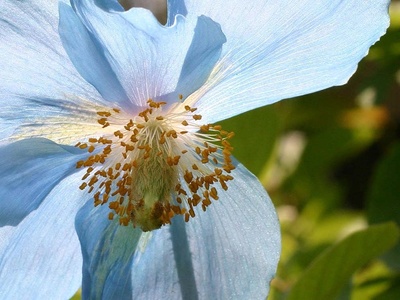
Himalayan Blue Poppy
The iconic true-blue poppy, known for its sky-blue, papery petals. It is notoriously difficult to grow, requiring cool, moist, and acidic conditions, making it a prized specimen for dedicated gardeners.
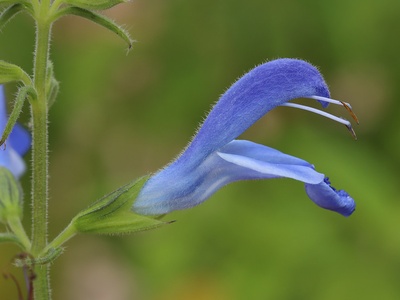
Gentian Sage
Produces some of the most intense, pure blue flowers in the plant kingdom. This tender perennial is often grown as an annual, prized for its large, vibrant blooms that attract hummingbirds.
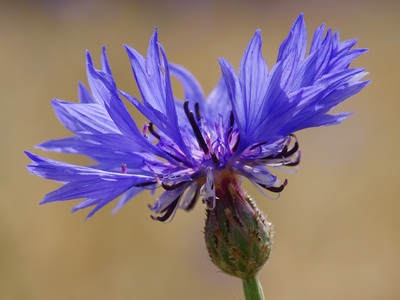
Cornflower
Also known as Bachelor’s Button, this easy-to-grow annual features brilliant blue, frilly flowers. A classic cottage garden plant, it self-seeds readily and is excellent for cutting and drying.

Blue Daze
A sprawling tender perennial, often grown as an annual, that produces a constant supply of true sky-blue, funnel-shaped flowers. It thrives in heat and sun, making it perfect for hanging baskets and groundcover.

Delphinium
Famous for its tall, majestic spires of densely packed flowers in shades of true blue, violet, and white. Delphiniums are a dramatic perennial for the back of the border but may require staking.

Siberian Bugloss
A shade-loving perennial with delicate sprays of tiny, sky-blue flowers that resemble forget-me-nots. Cultivars like ‘Jack Frost’ also offer stunning silver-variegated, heart-shaped foliage for season-long interest.
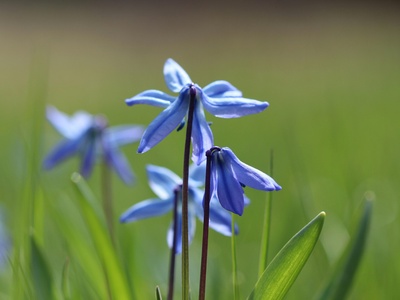
Bluestar
This perennial features clusters of delicate, star-shaped, powder-blue flowers in spring. Its main attraction is the feathery, fine-textured foliage that turns a brilliant golden-yellow in the fall.
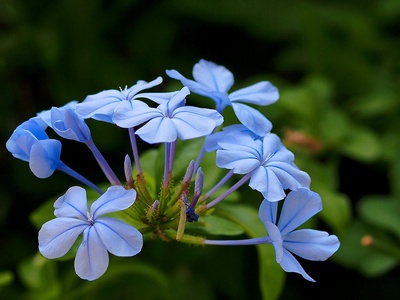
Leadwort
A fantastic, tough groundcover that produces brilliant cobalt-blue flowers from late summer into fall. As a bonus, its green foliage turns a beautiful bronze-red as the weather cools, providing multi-season interest.

Sea Holly
Not a true flower, but its spiny, cone-like flower heads are surrounded by striking, metallic-blue bracts. This drought-tolerant perennial adds unique texture and color to sunny, dry gardens.
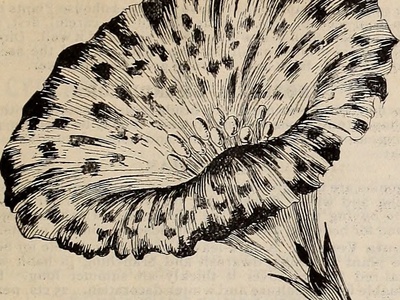
Morning Glory ‘Heavenly Blue’
A fast-growing annual vine cherished for its breathtaking, sky-blue, trumpet-shaped flowers that open in the morning. It quickly covers trellises and fences, providing a stunning vertical display.

Bigleaf Hydrangea
Famous for its large, globe-shaped flower clusters. The flower color is famously dependent on soil pH; acidic soil (below 6.0) is required to produce true blue blooms.
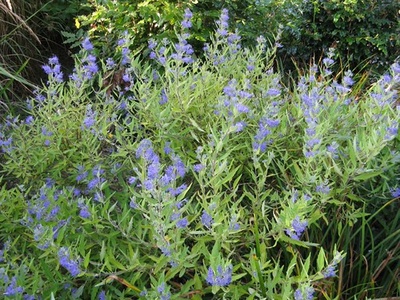
Bluebeard
A low-maintenance, drought-tolerant shrub that bursts into a haze of powder-blue flowers in late summer, attracting bees and butterflies. It blooms on new wood, so it can be pruned back hard in spring.
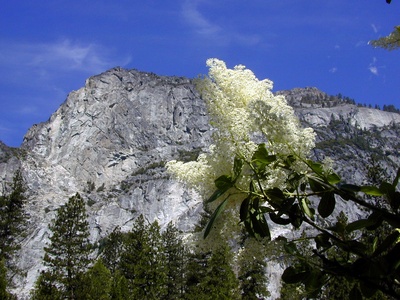
California Lilac
A group of evergreen shrubs native to the West Coast, celebrated for their profuse clusters of fragrant blue flowers in spring. They are drought-tolerant and thrive in full sun and well-drained soil.

Siberian Squill
One of the earliest spring bulbs, creating a carpet of intense, true-blue, nodding flowers. It naturalizes easily in lawns and under deciduous trees, signaling the end of winter.
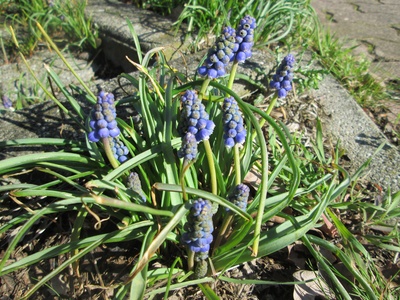
Grape Hyacinth
A beloved spring bulb with dense spikes of small, bell-shaped, cobalt-blue flowers that resemble tiny grapes. It’s easy to grow, multiplies quickly, and is perfect for borders and containers.
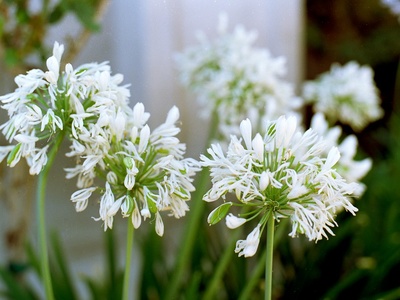
Lily of the Nile
This dramatic perennial produces large, spherical clusters of trumpet-shaped blue flowers on tall, leafless stems in summer. It’s a stunning, architectural plant for sunny borders and large containers.
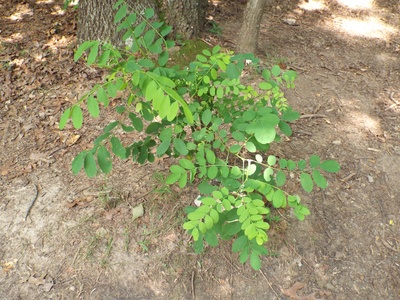
False Indigo
A long-lived, shrub-like perennial with spikes of indigo-blue, pea-like flowers in late spring. Its blue-green foliage remains attractive all season, and it forms interesting black seed pods in fall.

Virginia Bluebells
A spring ephemeral wildflower with charming, nodding clusters of flowers. The buds start pink and open to a lovely sky-blue. It thrives in moist, shaded woodlands and goes dormant by mid-summer.

Love-in-a-Mist
A whimsical annual with delicate, sky-blue flowers nestled in a web of ferny, thread-like foliage. After flowering, it produces an equally attractive, balloon-like seed pod perfect for dried arrangements.

Borage
An easy-to-grow herb with fuzzy leaves and charming, star-shaped, sky-blue flowers. The flowers are edible with a mild cucumber flavor, often used to garnish salads, desserts, and drinks.
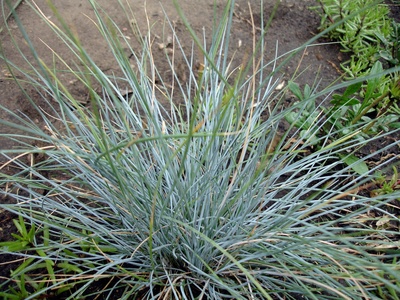
Blue Fescue
A popular, low-growing ornamental grass that forms a neat clump of fine, silvery-blue foliage. It’s drought-tolerant and provides excellent texture and color contrast in rock gardens and borders.

Hosta ‘Halcyon’
One of the best blue-leafed hostas, this shade-loving perennial features spear-shaped, heavily textured leaves of an intense chalky blue. It holds its blue color well throughout the season.
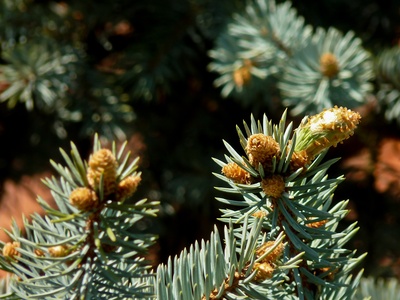
Colorado Blue Spruce
An iconic coniferous tree known for its stiff, silvery-blue needles. It provides strong vertical structure and year-round color in the landscape, though it can grow very large over time.
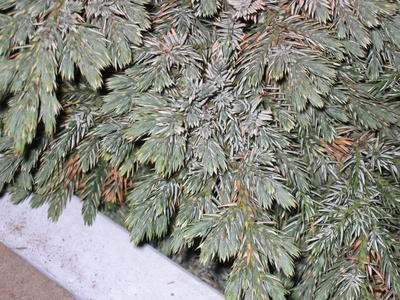
Blue Star Juniper
A dwarf, slow-growing evergreen shrub with dense, scale-like needles of an outstanding silver-blue. Its compact, mounding habit makes it a perfect, low-maintenance choice for foundation plantings and rock gardens.
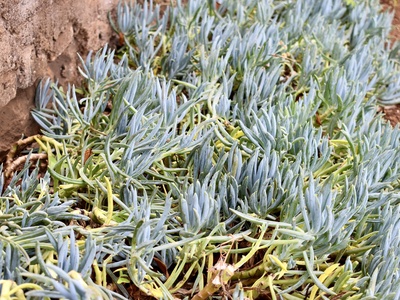
Blue Chalksticks
A striking succulent groundcover with fleshy, finger-like leaves in a powdery blue-gray color. It’s extremely drought-tolerant and ideal for sunny, dry areas, rock gardens, and modern container designs.
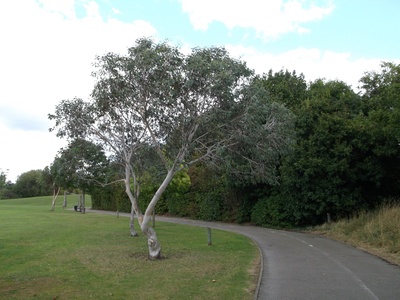
Cider Gum
A fast-growing tree, often grown as a shrub by coppicing it annually. This practice encourages the growth of its highly ornamental, rounded, silver-blue juvenile foliage, which is popular in floral arrangements.
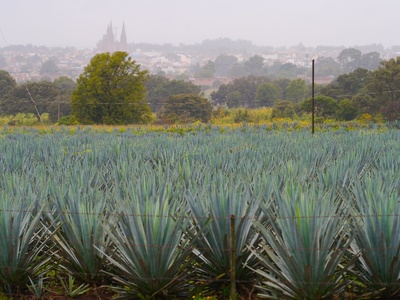
Blue Agave
A large, architectural succulent forming a rosette of long, spiky leaves in a distinctive blue-gray color. It is famously used to produce tequila and makes a dramatic statement in arid, frost-free gardens.

Porcelain Berry
A vigorous, deciduous vine that produces highly ornamental clusters of berries in the fall. The berries change color as they ripen, displaying shades of lilac, pink, turquoise, and a stunning porcelain blue.
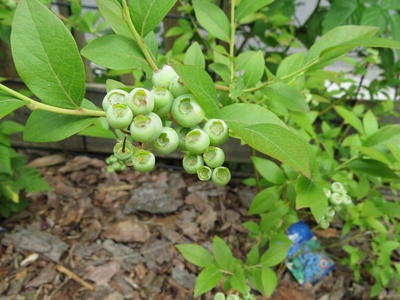
Highbush Blueberry
A deciduous shrub valued not only for its delicious and healthy, dusty-blue summer berries but also for its spring flowers and brilliant red fall foliage. It requires acidic soil to thrive.

Bluebead Lily
A woodland wildflower that, after its yellowish spring flowers fade, produces a cluster of striking, inedible berries of a brilliant, deep lapis-lazuli blue. A unique gem for the shade garden.
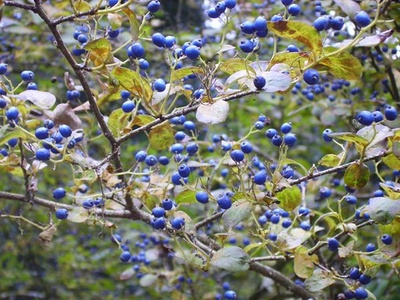
Sapphire Berry
A large shrub or small tree that becomes covered in clusters of breathtaking, sapphire-blue berries in the fall. The fruit is a major draw for birds and provides a spectacular late-season show.
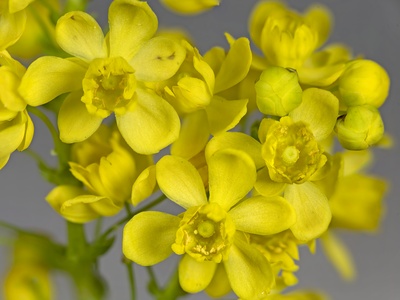
Oregon Grape
An evergreen shrub with holly-like leaves, fragrant yellow spring flowers, and clusters of waxy, blue-black, edible (but tart) berries in late summer. The foliage often turns bronze or purple in winter.

Edging Lobelia
A classic bedding and container annual prized for its masses of tiny, vibrant blue flowers that bloom all summer long. It is perfect for spilling over the edges of pots and window boxes.

Bog Sage
A tall, airy perennial that produces spikes of pure sky-blue flowers from late summer until frost. As its name suggests, it prefers consistently moist soil and is a favorite of bees and butterflies.

Cranesbill ‘Rozanne’
An exceptionally long-blooming perennial with violet-blue, saucer-shaped flowers that appear from late spring until frost. It forms a sprawling mound and is incredibly versatile and easy to grow.

Siberian Iris
An elegant and hardy iris with graceful, slender foliage and intricate flowers in shades of blue, violet, and white. It is low-maintenance, disease-resistant, and thrives in moist soils.
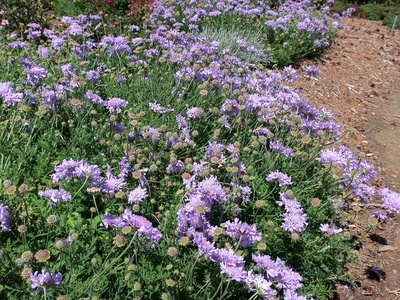
Pincushion Flower
Known for its distinctive, pincushion-like flowers with a domed center and frilly outer petals. This cultivar provides a constant supply of lavender-blue blooms that attract pollinators all summer long.
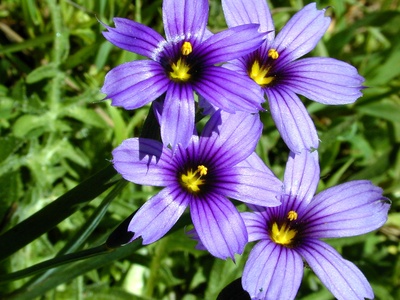
Blue-eyed Grass
Despite its name, this is not a grass but a member of the iris family. It forms clumps of grass-like foliage and produces charming, star-shaped, blue-violet flowers with a yellow center in late spring.
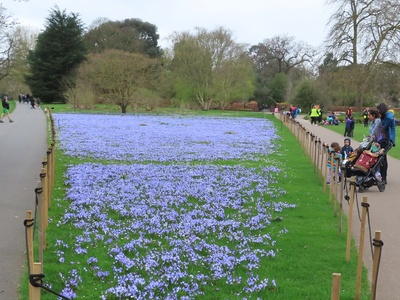
Glory-of-the-Snow
An early spring-blooming bulb with upward-facing, star-shaped flowers of a brilliant blue with a contrasting white center. It naturalizes readily, creating a beautiful carpet of color before trees leaf out.
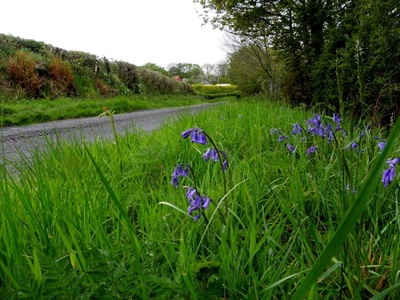
Desert Bluebells
A California native wildflower with stunning, bell-shaped flowers of an intense, vibrant cobalt blue. It’s a fast-growing annual that thrives in dry, sunny conditions and is excellent for desert landscapes.
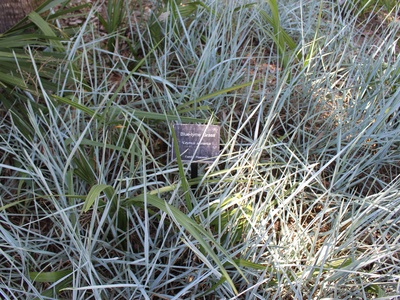
Blue Lyme Grass
A tough, fast-spreading ornamental grass with striking, metallic silver-blue blades. Its aggressive nature requires containment, but its color provides a bold, modern accent in the landscape.

Arrowwood Viburnum
A hardy, adaptable native shrub that offers creamy-white flower clusters in spring. Its main ornamental feature is the subsequent clusters of dark blue berries in late summer, which are a valuable food source for birds.
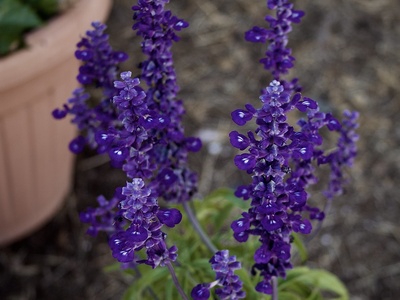
Mealycup Sage ‘Victoria Blue’
A popular bedding plant grown for its dense spikes of rich, violet-blue flowers that bloom profusely from summer to frost. It is drought and heat tolerant, making it a reliable performer in sunny gardens.

Chaste Tree
A large shrub or small tree that produces impressive, 8- to 12-inch spikes of fragrant, lavender-blue flowers in mid-to-late summer. It thrives in heat and attracts a wide range of pollinators.

Gentian
A low-growing alpine perennial that produces stunning, upward-facing, trumpet-shaped flowers of an incredibly deep and true blue. It requires well-drained soil and cool conditions to thrive.

